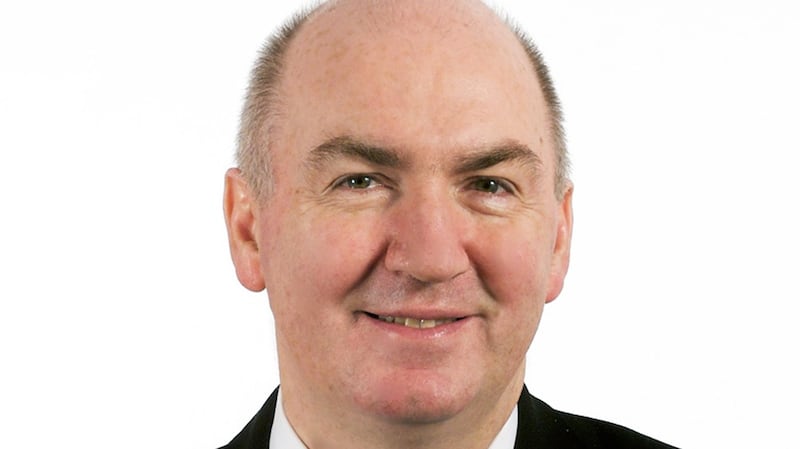This coming Saturday the Oesophageal Cancer Fund will hold a national survivors' and patients meeting in Dublin. Health care professionals, volunteers and survivors will meet to offer support and empower through sharing experiences and expertise.
Ireland has one of the highest rates of oesophageal cancer in Europe. It is a difficult cancer to cure, in part because it often presents at an incurable stage, and in part because the inherent natural behaviour (biology) of the cancer may be aggressive and resistant to our standard approaches with chemotherapy, radiation therapy, and surgery, somewhat akin to other cancers such as lung and pancreatic cancer.
Notwithstanding, there is increased optimism in the modern era that cure rates are improving through a combination of early diagnosis and improved and safer treatments.
The problem of oesophageal cancer in Ireland is important for several reasons. First, Ireland has one of the highest rates of oesophageal cancer in Europe, with approximately 450 new diagnoses each year. Second, the commonest subtype of oesophageal cancer has, it is estimated, doubled in incidence in Ireland over 20 years, with a continued upward trend anticipated. Third, the increasing problem of oesophageal cancer in Ireland parallels emerging trends in obesity and diet, as well as the frequency in western society of heartburn and reflux.
Gastro-oesophageal reflux disease and obesity are strongly associated with the commonest type (70 per cent) of oesophageal cancer, and smoking is the cause of a type that represents about 30 per cent. Consequently, strategies and initiatives targeting prevention of obesity, and optimum management of reflux (severe heartburn, etc) are relevant to prevention.
Finally, the magnitude of the operation for oesophageal cancer is perhaps greater than any other cancer operation, and it is unassailable from international experience and policies that this operation is best undertaken in specialist centres performing large numbers of these operations each year, and providing evidence of good outcomes.
In Ireland, the National Cancer Control Programme (NCCP) has designated four hospitals for this purpose, St James's Hospital (National Centre), Beaumont Hospital, Mercy University Hospital, Cork, and University Hospital Galway.
The commonest presenting symptom of cancer of the oesophagus is difficulty in swallowing, and this symptom must always be investigated urgently. Not everyone with this “alarm” symptom will have underlying cancer, and benign oesophageal strictures from chronic reflux, or severe motility disorders may also be the cause.

Less common presentations include intractable reflux, and some patients who are diagnosed early already have a reflux-induced change in the lining of the oesophagus known as Barrett’s oesophagus which is present in about 10 per cent of patients with symptomatic heartburn of reflux. For any person identified with Barrett’s, there is roughly a one in 400 chance per year of developing cancer, a small risk, but some patients will have changes that are deemed high risk and can have this risk reduced through treatment of the lining of the oesophagus with radiofrequency ablation (RFA). RFA in combination with surgery through the “camera” (endoscopic surgery) is a wonderful advance in the modern era for these patients as many heretofore would have undergone major surgery.
The current reality in Ireland is that of 100 patients with oesophageal cancer, approximately 45 will present with localised disease that can be treated with curative intent, and perhaps a further five of these cannot be treated aggressively because of medical co-morbidities. Curative therapy means either surgery alone or surgery preceded by combination chemotherapy alone or combined with radiation therapy is used, or occasionally radical radiation therapy in combination with chemotherapy and the avoidance of surgery.
Irrespective of the treatment approach, the treatment is complex and involved, with the surgery in particular associated with some risk to life and a significant risk of pneumonia, and with attrition for a number of months on quality of life, in particular weight loss and fatigue. Encouragingly, published data reported from the Irish network of specialist centres report cure rates and outcomes on a par with leading centres internationally.
Patients benefit from clinical trials and research, and Ireland is strong internationally in this respect for oesophageal cancer. For instance, Cancer Trials Ireland is leading a European trial of 600 patients comparing chemotherapy prior to surgery with a combination of chemotherapy and radiation therapy.
Scientists at the National Centre and in Trinity College and RCSI are looking at genes and proteins involved in cancer development from Barrett's oesophagus, and in the prediction of response to radiation therapy. Scientists at UCC are exploring the role of bacteria in the gut in this cancer. Researchers in Trinity and UCC are studying physical therapy and nutrition as patients go through treatment and prior to surgery, so-called prehabilitation, and in recovery and survivorship.
A UCD-TCD collaboration is exploring the mechanisms underpinning weight loss and appetite changes following surgery, and how this can be modified. And the Oesophageal Cancer Fund (OCF), which through Lollipop Day and fundraising has been an advocate and wonderful support for patients with oesophageal cancer since its inception 16 years ago, has funded the development of a National Barrett’s Registry targeting prevention and early diagnosis.
- Oesophageal Cancer Fund national patients meeting will take place at October 14th, at 10:30am-1pm, in the Stilorgan Park hotel.
- Prof John Reynolds is the National Lead in Oesophageal and Stomach Cancer, and Prof of Surgery at Trinity College and St James's hospital in Dublin.









